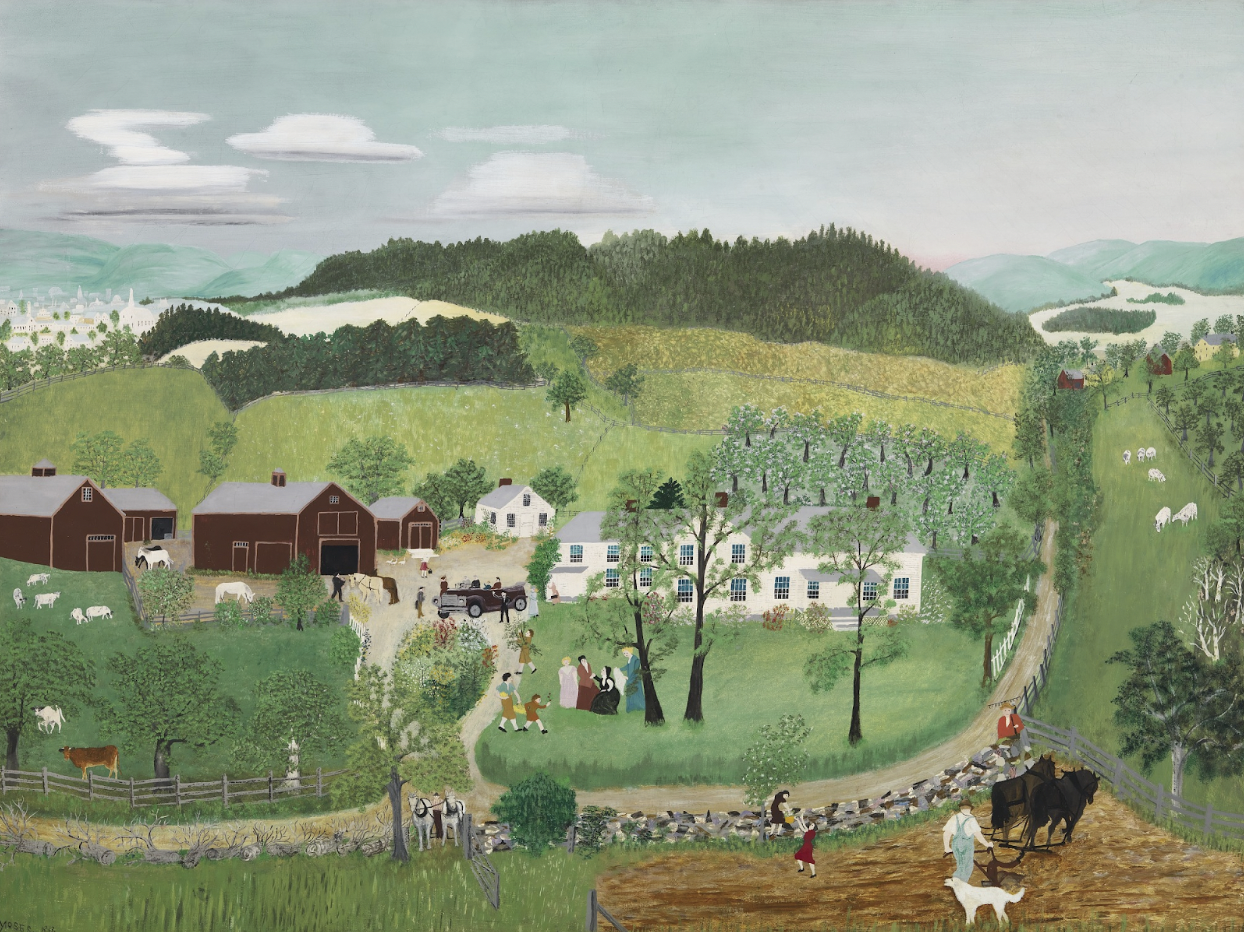KALLIR RESEARCH INSTITUTE OPENS NEW RESEARCH CENTER
KALLIR RESEARCH INSTITUTE OPENS NEW RESEARCH CENTER DEDICATED TO THE STUDY OF AUSTRIAN AND GERMAN EXPRESSIONISTS AND SELF-TAUGHT ARTISTS;
Upcoming Activities Include Otto Kallir Documentary, Major Schiele Exhibition at the Leopold Museum, Grandma Moses Retrospective and Study Center at the Smithsonian American Art Museum, Updated Schiele Catalogue Raisonné

Grandma Moses, Grandma Moses Goes to the Big City (1946). Smithsonian American Art Museum, Gift of the Kallir Family in memory of Otto Kallir. © Grandma Moses Properties.
November 1, 2024 – New York, NY – The Kallir Research Institute (KRI) announced today that it will formally open its new headquarters, dedicated to expanding upon the scholarship of artists championed by art historian, collector, and art dealer Otto Kallir (1894–1978) at his Galerie St. Etienne. The 3,700-square-foot research center is located in Midtown Manhattan, where six full-time employees manage the former Galerie St. Etienne’s library, archive, and scholarly activities.
Otto Kallir founded the Galerie St. Etienne in New York in 1939, after he fled his native Austria following the Nazi Anschluss. He brought with him works by Gustav Klimt, Oskar Kokoschka, Alfred Kubin, and Egon Schiele—Austrian Expressionists then unknown in the U.S. Alongside his long-serving business associate, Hildegard Bachert, Kallir would also go on to promote the work of German artists such as Käthe Kollwitz and Paula Modersohn-Becker, as well as the self-taught American painter Grandma Moses, establishing their markets and laying the groundwork for their present-day global renown. Kallir’s granddaughter, Jane Kallir, joined the gallery in 1977, assuming co-directorship with Bachert two years later.
Upon its 80th anniversary in 2019, the Galerie St. Etienne began transitioning into the nonprofit Kallir Research Institute, concluding commercial operations to focus exclusively on scholarship, fulfilling the Galerie St. Etienne’s original mission of raising understanding of German and Austrian Expressionists and self-taught artists. Now, shortly after the centenary of Kallir’s original Neue Galerie in Vienna (est. 1923), the KRI’s operations will carry on in a new space housing its extensive archives.
The KRI actively supports exhibitions of artists first championed by Otto Kallir at major museums and galleries. Changing Times: Egon Schiele’s Last Years, 1914-1918, a major exhibition at the Leopold Museum in Vienna, will be on view from March 18 to July 13, 2025. Co-curated by Jane Kallir, the exhibition will include loans facilitated by the KRI, as well as never-before-seen archival material from the period. In late 2025, the KRI will also introduce Phase 2 of the digital catalogue raisonné egonschieleonline.org, originally launched in 2018. The relaunch will comprise a redesign and entries and images for roughly 3,000 drawings and watercolors. Updated provenances for the works on paper and dossiers on important Schiele collectors will be added later, in Phase 3.
Also in 2025, a large retrospective at the Smithsonian American Art Museum will honor the American folk artist Grandma Moses, who began painting late in life, and whom Otto Kallir “discovered” in 1940. Featuring numerous works donated by the Kallir family, the show will recontextualize Moses through an analysis of her extraordinary popularity and the ways in which her age and gender provoked controversy. It is hoped that the Smithsonian will eventually establish a Grandma Moses study center housing paintings, drawings, source materials, publications, and archival materials. To date, the Kallir family has donated roughly $5 million in works by Grandma Moses to the Smithsonian, the High Museum of Art, the Bennington Museum, the Lucas Museum of Narrative Art, and Crystal Bridges.
Transatlantic Tastemaker: Otto Kallir & Austrian Modernism, a documentary chronicling Otto Kallir’s life, is available in German on the Austrian public broadcasting company Österreichischer Rundfunk (ORF). It was inspired by the 100th anniversary of the Neue Galerie, Otto’s first gallery in Vienna, which he later brought to New York City under the name Galerie St. Etienne. Transatlantic Tastemaker highlights his crucial role in cultivating the scholarship and appreciation of artists such as Gustav Klimt, Egon Schiele, and Oskar Kokoschka, among others. It will be available to stream in English in the near future.
The KRI’s archives contain important publications on Expressionism and self-taught artists, including rare catalogues raisonnés and unmatched resources on Egon Schiele and Grandma Moses. The archives also record the Galerie St. Etienne’s more than 80 years of commercial activities, including correspondence related to exhibitions and research materials for the catalogues raisonnés on Richard Gerstl, Grandma Moses, and Egon Schiele.
The Kallir Research Institute is open to qualified researchers by appointment at 156 W 56th St., Suite 802, New York, NY 10019. Please contact info@kallirresearch.org for further information.
###
About the Kallir Research Institute
The Kallir Research Institute (KRI) is a nonprofit foundation established in 2017 to continue and expand upon the scholarship of art historian, collector, and art dealer Otto Kallir (1894-1978). Its research focuses primarily on the Austrian and German Expressionists, foremost among them Egon Schiele, Richard Gerstl and Käthe Kollwitz. The KRI also specializes in the work of artists who were introduced to the U.S. by Kallir—including Gustav Klimt, Oskar Kokoschka, Alfred Kubin, and Paula Modersohn-Becker. Additionally, the KRI’s archives include a wealth of information about self-taught artists, foremost among them Anna Mary Robertson (”Grandma”) Moses.
Media Contact:
Katrina Stewart
Blue Medium, Inc.
Tel: +1-212-675-1800
katrina@bluemedium.com